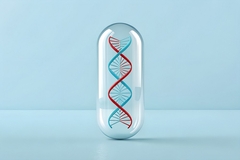CSPI approaches FDA for health warnings on sodas

CSPI's petition is supported by the American Dental Hygienists Association, the American Society of Bariatric Surgeons, the Consumer Federation of America, the National Center for Health Education, and others.
15/07/05 Teenage boys who drink carbonated or non-carbonated soft drinks consume an average of three 12-ounce cans per day, and girls more than two cans, according to a new analysis of 1999-2002 government data. Teens who drink soft drinks get nearly 15 percent of their total calories from those drinks. Although adults seem to be turning to diet soda, the Center for Science in the Public Interest (CSPI) says that the data show teenagers are actually drinking more high-calorie soft drinks than ever-and less diet soda than in years past-despite growing concerns about obesity.
In a petition filed with the Food and Drug Administration (FDA), CSPI asked the agency to require a series of rotating health notices on containers of all non-diet soft drinks-carbonated and non-carbonated-containing more than 13 grams of refined sugars per 12 ounces. (The typical 12-ounce soda contains 40 grams.) CSPI said that those messages could include:
-The U.S. Government recommends that you drink less (non-diet) soda to help prevent weight gain, tooth decay, and other health problems.
-To help protect your waistline and your teeth, consider drinking diet sodas or water.
-Drinking soft drinks instead of milk or calcium-fortified beverages may increase your risk of brittle bones (osteoporosis).
CSPI also said that caffeinated drinks should bear a notice that reads "This drink contains x grams of caffeine, which is a mildly addictive stimulant drug. Not appropriate for children."
In 2004, soda companies produced 37 gallons of carbonated non-diet soda-providing about 60,000 empty calories-for every man, woman, and child in the United States, according to Liquid Candy, a CSPI report first issued in 1998 and re-released in updated form today. As high as that is, industry data show that per capita production of carbonated soda has dropped 7 percent since 1998. And because many adults have switched to diet soda, production of non-diet soda has declined 12 percent-the biggest decrease ever. Nevertheless, despite that decline in overall production, soda consumption in kids has increased from the 1970s to the 2000s, as have their rates of obesity. Obesity has doubled in kids, and tripled in teens. Though the correlation is striking, recent studies have provided even more direct evidence implicating increased soda consumption with weight gain.
CSPI's new data show that one out of every 10 boys consumes 66 ounces-equivalent to five and a half 12-ounce cans, or about 800 calories-per day. One out of every 20 boys consumes the equivalent of 7 cans per day, or about 1,000 calories. The amount of refined sugars that soda-drinking teens get from soda exceeds the government's recommendations for their sugar consumption from all foods.
Overweight or obese teens are increasingly at risk for type-2 diabetes, once called "adult-onset" diabetes and once rare in kids. And the decreased calcium intake that may accompany increased soda consumption can put people, particularly women, at greater risk for broken bones and osteoporosis.
CSPI's petition is supported by the American Dental Hygienists Association, the American Society of Bariatric Surgeons, the Consumer Federation of America, the National Center for Health Education, and others. It is also supported by leading scientists and nutrition experts, including Gladys Block of the University of California, Berkeley, School of Public Health; George Bray of the Pennington Biomedical Research Center at Louisiana State University; Brian Burt of the University of Michigan School of Public Health; JoAnn Manson of Harvard Medical School; and Marion Nestle of New York University.
Besides health messages on labels, CSPI recommends requiring calorie labeling of beverages on chain restaurant menus and menu boards, and stopping soda sales in schools. CSPI also says that states and local governments that levy small taxes on soda or other junk foods should consider earmarking those revenues for promoting health and fitness. A national 2-cent-per-can tax on soda would raise $3 billion annually-almost one thousand times as much money as the federal government spends promoting consumption of fruits and vegetables.
http://www.medicalnewstoday.com/medicalnews.php?newsid=27426












